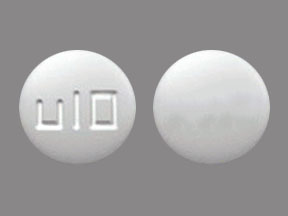Brivaracetam Disease Interactions
There are 4 disease interactions with brivaracetam.
Antiepileptics (applies to brivaracetam) suicidal tendency
Moderate Potential Hazard, Moderate plausibility. Applicable conditions: Depression, Psychosis
Antiepileptic drugs (AEDs) have been associated with an increased risk of suicidal thoughts or behavior in patients taking these drugs for any indication. Pooled analyses of 199 placebo-controlled clinical studies involving the use of 11 different AEDs showed that patients receiving AEDs had approximately twice the risk of suicidal thinking or behavior compared to patients receiving placebo. AEDs should be administered cautiously in patients with depression or other psychiatric disorders; phentermine-topiramate should be avoided in patients with history of suicidal attempts or active suicidal ideation. The risk of suicidal thoughts and behavior should be carefully assessed against the risk of untreated illness, bearing in mind that epilepsy and many other conditions for which AEDs are prescribed are themselves associated with morbidity and mortality and an increased risk of suicidal thoughts and behavior. Patients, caregivers, and families should be alert to the emergence or worsening of signs and symptoms of depression, any unusual changes in mood or behavior, or the emergence of suicidal thoughts or behavior. If patients have symptoms of suicidal ideation or behavior, a dosage reduction or treatment discontinuation should be considered.
References
- (2002) "Product Information. Tegretol (carbamazepine)." Novartis Pharmaceuticals
- (2001) "Product Information. Klonopin (clonazepam)." Roche Laboratories
- (2001) "Product Information. Dilantin (phenytoin)." Parke-Davis
- (2001) "Product Information. Cerebyx (fosphenytoin)." Parke-Davis
- (2001) "Product Information. Mysoline (primidone)." Elan Pharmaceuticals
- (2005) "Product Information. Lyrica (pregabalin)." Pfizer U.S. Pharmaceuticals Group
- (2009) "Product Information. Sabril (vigabatrin)." Lundbeck Inc
- (2011) "Product Information. Potiga (ezogabine)." GlaxoSmithKline
- (2012) "Product Information. Fycompa (perampanel)." Eisai Inc
- (2016) "Product Information. Briviact (brivaracetam)." UCB Pharma Inc
- (2018) "Product Information. Epidiolex (cannabidiol)." Greenwich Biosciences LLC
- (2020) "Product Information. Xcopri (cenobamate)." SK Life Science, Inc.
- (2020) "Product Information. Fintepla (fenfluramine)." Zogenix, Inc
- (2022) "Product Information. Ztalmy (ganaxolone)." Marinus Pharmaceuticals, Inc
- (2022) "Product Information. Diacomit (stiripentol)." Biocodex USA, SUPPL-3
- (2023) "Product Information. Qsymia (phentermine-topiramate)." Vivus Inc, SUPPL-23
- (2023) "Product Information. Topamax (topiramate)." Janssen Pharmaceuticals, SUPPL-65
Brivaracetam (applies to brivaracetam) bronchospasm/angioedema.
Moderate Potential Hazard, Moderate plausibility. Applicable conditions: Asthma
Bronchospasm and angioedema have been reported in patients taking brivaracetam and a hypersensitivity reaction to this agent could predispose patients at risk. Caution is recommended when using brivaracetam in patients predisposed to bronchospasm and angioedema.
References
- (2016) "Product Information. Briviact (brivaracetam)." UCB Pharma Inc
Brivaracetam (applies to brivaracetam) hepatic dysfunction
Moderate Potential Hazard, Moderate plausibility. Applicable conditions: Liver Disease
Brivaracetam is primarily metabolized by hydrolysis in the liver. A pharmacokinetic study in adult subjects with hepatic cirrhosis, Child-Pugh grades A, B, and C, showed 50%, 57%, and 59% increases in brivaracetam exposure, respectively, compared to matched healthy controls. Because of increases in brivaracetam exposure, dosage adjustment is recommended for all stages of hepatic impairment as per manufacturer recommendation. Care and close monitoring is recommended when using this agent in patients with liver disease.
References
- (2016) "Product Information. Briviact (brivaracetam)." UCB Pharma Inc
Brivaracetam (applies to brivaracetam) renal impairment
Moderate Potential Hazard, Moderate plausibility. Applicable conditions: Renal Dysfunction
No dose adjustments are needed for patients with impaired renal function. The use of brivaracetam is not recommended in patients with end-stage renal disease undergoing dialysis as there are no data in this patient population.
Brivaracetam drug interactions
There are 300 drug interactions with brivaracetam.
Brivaracetam alcohol/food interactions
There is 1 alcohol/food interaction with brivaracetam.
More about brivaracetam
- brivaracetam consumer information
- Check interactions
- Compare alternatives
- Reviews (68)
- Side effects
- Dosage information
- During pregnancy
- Drug class: pyrrolidine anticonvulsants
- Breastfeeding
- En español
Related treatment guides
Drug Interaction Classification
| Highly clinically significant. Avoid combinations; the risk of the interaction outweighs the benefit. | |
| Moderately clinically significant. Usually avoid combinations; use it only under special circumstances. | |
| Minimally clinically significant. Minimize risk; assess risk and consider an alternative drug, take steps to circumvent the interaction risk and/or institute a monitoring plan. | |
| No interaction information available. |
Further information
Always consult your healthcare provider to ensure the information displayed on this page applies to your personal circumstances.


